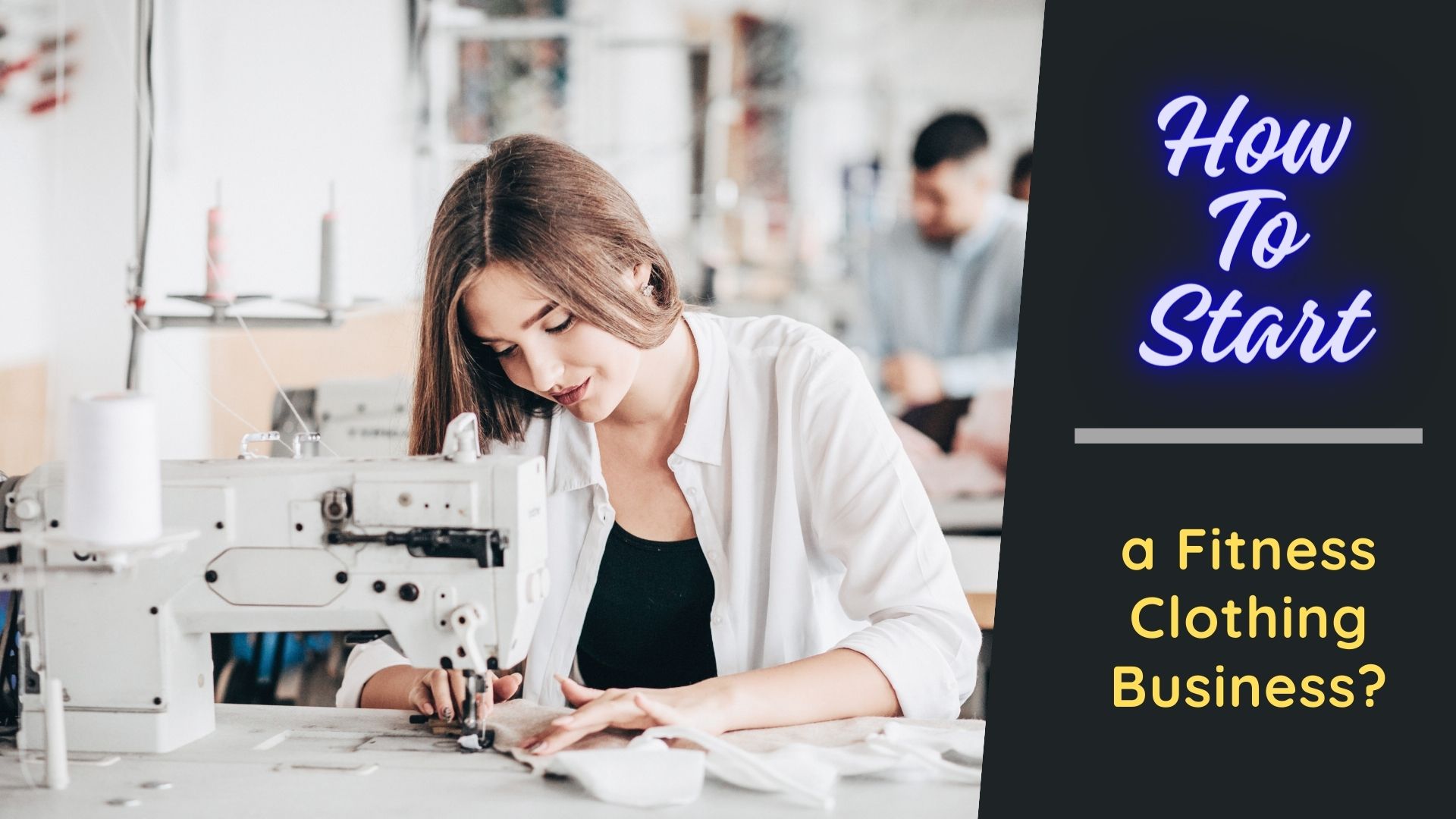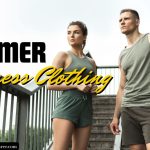How To Start a Fitness Clothing Business?

The fitness clothing business is becoming a profitable and sustainable venture in a world increasingly focused on health and wellness. Despite fluctuations in the global economy, the demand for high-quality fitness apparel remains strong. This is mainly due to a growing population of health-conscious individuals dedicated to their fitness routines and seeking functional and fashionable apparel.
The trend is further fueled by the rise of social media influencers and fitness personalities, making the fitness clothing industry a promising space for entrepreneurs.
Research to Develop a Business Plan
Before delving into the dynamics of running a fitness clothing business, it is crucial to conduct extensive research. This involves understanding the preferences of your target market, identifying current fitness trends, and analyzing your competitors. To achieve this, you should explore key questions such as: What styles and materials are most popular in fitness apparel? What pricing strategies do your competitors use? How large is your potential market?
Additionally, you should research to understand the supply chain logistics, manufacturing costs, and potential legal considerations. The insights gained from this research will be critical in developing a robust and informed business plan, which will lay the groundwork for a successful venture.
Starting a Fitness Clothing Business: Online vs. Offline
Starting a fitness clothing business can be exciting, but deciding whether to sell online, offline, or both can be confusing. Each approach has unique benefits that you should carefully consider as you develop your business strategy.
Starting Offline
Setting up a physical store allows you to interact directly with customers and give them a tangible brand experience. Here are a few tips to follow:- Location is Key: Choose a location with high foot traffic, preferably near gyms, fitness centers, or shopping districts.
- Build a Strong Brand Presence: Your physical store is not merely a place to sell products but also a space to represent your brand's ethos and lifestyle.
- Network and Collaborate: Partner with local gyms, fitness trainers, and wellness centers for mutual promotion.
- Offer Personalized Services: In-store events, fitting sessions, and tailored shopping experiences can help distinguish your brand.
- Manage Inventory Wisely: Be strategic about stock levels to avoid overstocking while ensuring popular items are always available.
Starting Online
Selling online opens up a broader potential customer base but requires developing an engaging, user-friendly website and robust e-commerce operations.- Develop a User-Friendly Website: Prioritize easy navigation, high-quality product images, and detailed product descriptions.
- Leverage Social Media: Use platforms like Instagram and Facebook for marketing and engaging with your target audience.
- Optimize for E-commerce: Implement effective SEO strategies to increase visibility and consider utilizing platforms like Amazon or Etsy.
- Focus on Customer Experience: Ensure a seamless purchase process, easy returns, and responsive customer service.
- Utilize Analytics: Track user behavior on your site to understand customer preferences and tailor your offerings accordingly.
Both offline and online businesses have their distinct advantages.
An offline store offers a tangible brand experience and immediate customer engagement, while an online store provides wide reach and operational flexibility.
Combining both could offer the best of both worlds, catering to a diverse customer base and enhancing brand visibility.
Choosing the Right Manufacturer
Partnering with the right private label fitness clothing manufacturer is pivotal in the fitness clothing business. The quality, cost, and reliability of your products hinge on this decision. Here are a few things you should consider:
Quality Assurance
Ensure the manufacturer consistently meets your brand's standards for material quality, durability, and design precision. To do this, you should conduct thorough research on their previous work, seek feedback from their current clients, and consider visiting their production facility to assess their processes firsthand. Remember, the quality of your products directly reflects your brand's reputation in the market.Minimum Order Quantity (MOQ)
Understanding the MOQ requirements is crucial for managing your inventory and cash flow. If you're starting small, look for fitness clothing manufacturers willing to work with lower MOQs to avoid overstocking. As your business grows, negotiate MOQs that align with your increased demand, but always be mindful of storage capabilities and the potential need for liquidation strategies for excess stock.Production Capacity and Lead Time
Assess the manufacturer's ability to scale production up or down based on seasonal fluctuations in demand. Inquire about their lead times and ensure they align with your product launch schedules and inventory replenishment needs. Production delays can lead to stock outs, significantly impacting customer satisfaction and sales, particularly during high-demand periods like holidays or fitness seasons.Sustainability Practices
If sustainability is important to your brand, partner with fitness clothing manufacturers who use eco-friendly materials and processes. This includes using organic or recycled fabrics, implementing waste reduction practices, and ensuring ethical labor conditions. Promoting these practices appeals to environmentally conscious consumers and contributes positively to your brand's image and values.Cost Effectiveness
While quality should not be compromised, it's important to negotiate terms that ensure profitability. Consider factors like material costs, labor, shipping, and duties when evaluating the cost-effectiveness of a fitness clothing manufacturer. Building a long-term relationship can often lead to better pricing and terms, so consider the potential for future growth and collaboration when making your decision.Samples and Prototypes
Before finalizing a large order, request samples or prototypes to evaluate the quality and accuracy of the products. This step allows you to make necessary adjustments in design, fit, or material choices. It's also an opportunity to test the products in real-world conditions, ensuring they meet the performance and durability standards your customers expect.Marketing Your Fitness Clothing Business
Effective marketing is key to attracting and retaining customers in the competitive fitness clothing industry. Here are detailed strategies for both offline and online businesses:
Offline Marketing Strategies
A multi-faceted approach can be highly effective for the offline marketing of a fitness clothing business.
Engaging with the local community is crucial; this can be achieved by participating in local events, sponsoring fitness competitions, and forming collaborations with local gyms and fitness influencers. Such activities build brand recognition and foster a sense of community involvement.
Additionally, hosting in-store experiences like fitness classes, wellness workshops, or fashion shows can create a dynamic and engaging shopping environment. These events are not just about selling products but also about creating memorable experiences that can attract new customers and solidify loyalty among existing ones.
Incorporating traditional advertising methods remains relevant, especially in areas with high foot traffic. Using local newspapers, magazines, radio, and outdoor advertising such as billboards or bus stops can effectively spread the word about the brand.

Online Marketing Strategies
If you want your fitness clothing business to thrive in the online marketing world, having a diverse digital strategy is crucial. This strategy should encompass the use of social media channels like Instagram, Facebook, and TikTok to display your products, share customer feedback, and interact with a vast audience. Partnering with influencers can also give your brand a wider reach.
Content marketing is another crucial strategy that involves creating informative blogs or YouTube videos that offer workout tips or fashion trends. This not only helps to improve SEO but also establishes the brand as an industry authority.
Email marketing is a great way to keep customers informed about new products and special offers, and it can also foster customer loyalty. It's important to ensure that email campaigns are personalized to the audience for maximum effectiveness.
Investing in targeted online advertising using platforms such as Google Ads or Facebook Ads can help to reach specific demographics.
Common Mistakes to Avoid in a Fitness Clothing Business
Neglecting Market Research
One of the most common mistakes is not conducting thorough market research. Understanding your target audience, their preferences, and the competitive landscape is essential. Failing to do so can lead to misaligned product offerings and marketing strategies.Underestimating Quality Importance
Compromising the quality of your products can harm your brand's reputation. It's crucial to ensure that your fitness clothing meets high durability, comfort, and functionality standards.Poor Inventory Management
Overstocking or understocking can lead to significant financial strain. It's important to have a strategic approach to inventory management, considering demand forecasts and storage capacities.Overlooking Customer Feedback
Ignoring customer feedback and reviews can be detrimental. Customer insights are valuable for improving product quality, addressing concerns, and enhancing overall customer satisfaction.Ineffective Online Presence
Having a weak online presence can limit your reach. An engaging, user-friendly website and active social media profiles are essential for connecting with customers and promoting your brand.Ignoring Sustainability Trends
Sustainability is becoming increasingly important to consumers. Not incorporating sustainable practices and materials into your products can alienate a growing segment of eco-conscious customers.Inadequate Marketing Efforts
Insufficient or ineffective marketing can hinder your brand's growth. Investing in a well-rounded marketing strategy that encompasses both digital and traditional methods is important.Launching (And Growing) Your Fitness Clothing Business
Getting a fitness clothing brand off the ground takes strategic planning and execution. Here are some key steps to launch and sustainably grow your business:- Choose a business model- Brick-and-mortar, online, or both? Outline the pros and cons of each approach given your goals, target market, and resources.
- Name and brand your business - Pick a memorable name reflecting your vision. Design a cohesive brand identity with a logo, color palette, etc., that resonates with your audience.
- Partner with the right manufacturer: Vet fitness clothing suppliers on production capacity, costs, sustainability credentials, and quality control. Sample products extensively before large orders.
- Craft a marketing strategy: Spread the word through social media, influencers, email marketing, and potentially local print/radio ads. Prioritize channels where your audience is active.
- Manage inventory diligently: Forecast demand accurately to minimize excess stock. Improve inventory tracking and storage logistics as you grow.
- Gather customer feedback: Interact on social media and run surveys to understand customer wants. Let feedback guide product development and marketing.
- Develop online assets: Create a polished website with detailed product info, lifestyle photography, and easy checkout. Curate social media with promotions, new arrivals, and styling content.
- Choose delivery partners wisely: For e-commerce sales, partner with carriers providing reliable and fast shipping. Offer multiple delivery options.
- Stay adaptable: Continuously track industry and consumer trends. Be ready to tweak products, branding, marketing, and operations to stay relevant.


















